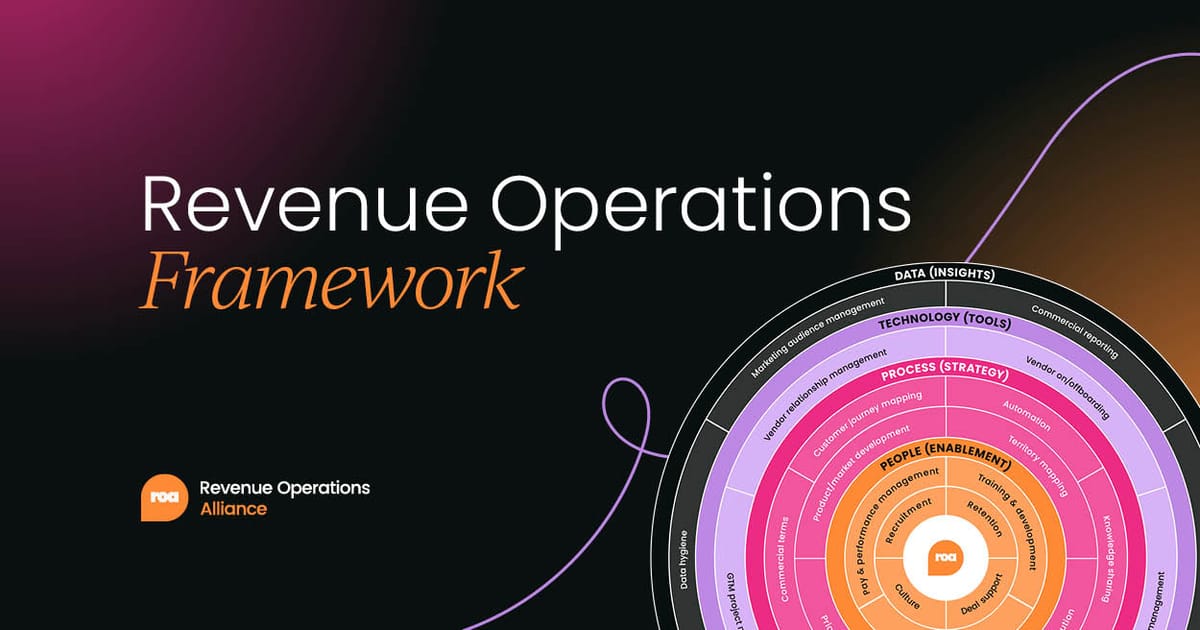Historically, revenue operations has been primarily focused on a three-legged stool model or triangle of operational efficiency across three core groups: 1) sales, 2) marketing, and 3) customer success (post-sales account management).
The primary mission is to always generate new business while protecting the existing book of business and increasing the probability of renewal or annuity business.
Repeat business is generally a clear indication that the customer is satisfied and has endorsed your business, product, or service with a contract renewal.
The rule of three
Three is a good number but are we missing something? Should revenue operations teams be thinking more strategically about how the rest of the company impacts their ability to sell and resell your products and services?
I’m a big fan of keeping things simple and three has always been a “magic number” for me.
I’ve written and lectured about the “the rule of three.” The rule of three is a theory used across many different fields and disciplines. There’s even a survival principle called the “rule of threes” which is used to help people prioritize things in order to survive a difficult emergency situation.
You might’ve heard of these concepts or perhaps seen them discussed on a wilderness survival reality show. You can survive three weeks without food, three days without water, three hours in adverse weather conditions such as extreme heat or cold, and three minutes without air underwater or in ice water before the hypoxemia or hypothermia sets in.
Even though it might feel like your job is a survival exercise, most revenue operations teams are not fighting the elements for their own wilderness survival.
I believe you need to focus on three important things across any operations organization. I generally start with:
- People are the team members who execute the strategic plan.
- Process is the opportunity to solve complex problems and create solutions to achieve that plan.
- Technology is there for you to push the technical limits to find areas and opportunities to innovate and improve.

Revenue operations is more than three things…
When it comes to revenue operations, a focus on three things works well but there’s more than just sales, marketing, and customer success to worry about. Often, the role includes additional focus on product and technology, (which may include design, engineering, production, and/or manufacturing).
Revenue teams need to work cross-functionally and should have a seat at the product and technology table. Revenue teams are the voice of the company and the voice of the customer at the same time.
Sales teams are on the frontlines pitching your company's products and services to existing and potential customers. They are also on the frontline when it comes to customer feedback whether positive or negative.
Many revenue operations teams have “sales engineering” roles, who are there to get deep in the weeds on the capabilities and solutions of the sales process. However, how integrated are sales teams and sales engineers when it comes to the voice of the customer feedback loop?

What is your customer feedback loop?
How does customer feedback make it back to the product and technology teams or quality control teams in a production or manufacturing operation?
Do you have a place where sales can share that feedback cross-functionally? Do you allow other members of your organization to communicate or interact with your customers? Do you track and escalate customer feedback so that it can be addressed and fixed?
I genuinely believe that revenue operations teams who think and act more globally than the core three areas of sales, marketing, and customer success will also be in a better position to provide a valuable feedback loop to the rest of the organization.
Many companies do this today as something ad-hoc or as it happens, but successful companies take this feedback very seriously and see it as essential to their ability to innovate and improve their products and services.
One philosophy that some customer success teams have employed is to invite their engineering or product team members to sit in on customer meetings. Whether that is in the form of a quarterly business review (QBR) or in some cases fielding inbound customer service calls, chats, or emails.
The value is that it’s not seen as the revenue teams complaining internally on behalf of the customer, but rather the customer sharing feedback directly with the product and technology teams who have the ability and responsibility to fix problems.
Customer success teams can file tickets and bugs, but many revenue operations teams see engineering as the bottleneck where tickets get added to a perpetual backlog with no method of prioritizing fixes.

How can revenue operations work better cross-functionally?
There are several methods for addressing this with a tiered escalation process that has on-call rotations where engineering and product teams are available to deal with severe issues quickly.
Another concept is embedding product and technology teams within the revenue organization so they have a seat at the customer feedback table.
In my last company, the customer support team maintained a JIRA backlog to track the number of inbound complaints for a particular issue to help product and engineering prioritize the fixes. We would meet regularly and both teams participated in agile standups to pitch ideas or highlight concerns from customers.
An agile methodology has worked well to unify cross-functional teams. In my experience, it ensures teams have equal representation and opportunities to listen to the customer’s voice.
When I worked for Gogo, we used a combination of both Agile and Waterfall. Agile worked well internally with software development but externally our airline customers and aviation manufacturers operated in the waterfall methodology. We took a hybrid approach to satisfy our customers, partners, and internal teams – and it worked.
Regardless of the methodology you employ, there is value in having product and technology teams closer to the customer. I often find these teams are hungry for customer feedback so they can improve products and services.
The problem today is that the feedback loop needs to be in real-time (or pretty darn close to it).
Customers are more savvy than ever before and they leverage the power of social media to get your attention faster than calling customer support, chat, or email. How do you stay ahead of the curve to address those issues?

'Innovate or die' should be 'integrate or die'
Innovation is critical for any company to stay ahead of the curve but integrated teams are essential for success.
Revenue operations heading into 2025 needs to move beyond the triangular approach. Maybe it needs to be more of a revenue operations pentagon, hexagon, or octagon.
Putting geometry aside, revenue operations needs to be cross-functionally integrated across your organization to ensure the feedback loop process is established and that there is a seat at the product and technology team table and vice-versa.
Product and technology teams should also have a seat at the revenue operations table because ultimately, we should be working collectively to delight our customers and continue to win their business.
There’s also an argument that continuous improvement programs cannot happen in a vacuum or in silos.
Successful companies should be integrated internally, work collaboratively and cross-functionally, and listen to their customers' feedback so they can continue to surprise and delight their customers with improvements, new products, and innovations.





